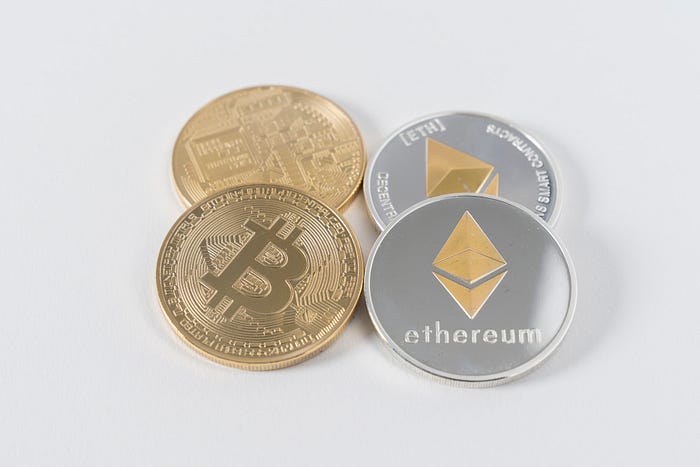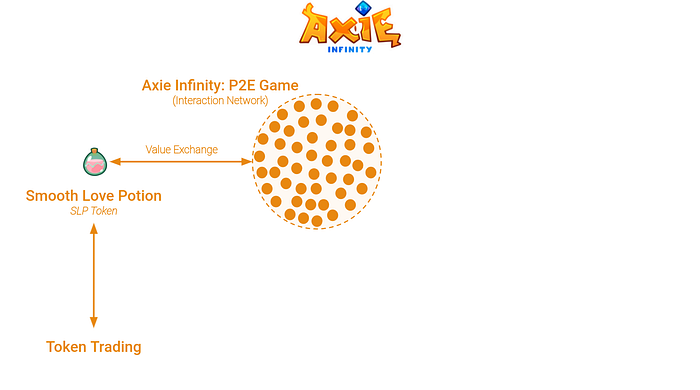Crypto & NFTs: Network Effects in Web3
Web3 projects leveraging crypto and NFTs combine multiple types of network effects, but these network effects are also relatively weak… at least so far

Web3 has become the defining tech trend of 2021 — and network effects are at the center of this. Let me begin by setting some context:
- Web 1.0 was the “read-only” phase of the internet where users could access information online (e.g. Yahoo, Google).
- Web 2.0 was the transition to a “read-write” phase, where users could not only access information but also create it (e.g. Facebook, Wikipedia). Value creation in this era shifted from companies to users — but still within closed networks owned and operated by companies.
- Web3 is meant to be the next phase of the internet, where value creation occurs on decentralized networks owned and operated by users. This is being enabled by a range of complementary innovations including crypto protocols and NFTs.
The goal of this post is not to unravel the possibilities or technical complexity of web3. Instead, I want to focus on the nature of network effects in this era.
So far, I have come across 3 of the 4 unique network effect models in various web3 projects — marketplaces, interaction networks, and platforms. These web3 models have a couple of common characteristics:
- Their network effects are natively layered, i.e. every project combines multiple forms of network effects.
- Their network effects are also weaker and less defensible compared to web 2.0 variants, at least so far.
I’ll explain these patterns with the help of two case studies — Ethereum and Axie Infinity, which are among the most successful web3 projects to date. They are also representative examples as their network effects share many characteristics with the broader web3 landscape.
Ethereum: Layer 1 Protocol

Ethereum is often called a Layer 1 protocol (with a capital “L”), i.e. it is the underlying blockchain “computer” on top of which other projects are created. The animation above shows the three different types of network effects on Ethereum. Let’s take a deeper look at them.
Network Effect 1: Ethereum Blockchain and Ether Token (Interaction Network)

The Ethereum blockchain is essentially a network of interconnected computers or nodes. These nodes validate transactions and “mint” new Ether tokens as a reward for their efforts. The addition of a node increases the throughput or capacity of the protocol — to support more token transactions and developer activity. At first glance, this looks like a straightforward, 1-sided network effect. But it is more nuanced than it appears — because the addition of more nodes does not increase the value of the protocol for other nodes. If anything, it reduces value for other nodes as there is now more competition to validate transactions and mint new tokens. However, the addition of more nodes increases capacity, and therefore value, for buyers of the Ether token. More token buyers increase the value of the Ether token and therefore make it more valuable for nodes to validate transactions. In other words, these are cross-side network effects on a 2-sided interaction network, with side switching built-in (token buyers can also be validators and vice versa).
However, this network structure also creates a couple of challenges: (1) a unique form of negative network effect, and (2) commoditization risk. Let’s dig into the negative network effect first. Ethereum and other crypto protocols face the risk of network congestion, i.e. too much activity can overwhelm the capacity of the protocol, leading to high transaction fees and processing times. So beyond a point, the addition of a token buyer decreases the value of the network for all other token buyers. This type of negative network effect does not exist in web 2.0 products. It is specific to crypto and physical networks like telephone or broadband, where too much traffic can reduce speed or service quality.
The second challenge here is commoditization risk. This is partly because blockchains are identity agnostic, i.e. the identity of each node does not matter to other nodes or to token buyers. And so, each new node adds less incremental value to the network as it scales. Compare this with the network effects of the original telephone network. Unlike blockchain protocols, the telephone network was identity focused, i.e. you could not contact a specific person if they did not have a telephone connection, even if others did. This meant that the utility of the telephone network continued to grow as adoption increased — as it increased the number of specific individuals you could call. In contrast, the network effects of the blockchain’s interaction network weaken as it grows, i.e it becomes less defensible. Competing blockchain protocols merely need to become “large enough” relative to their transaction volume or activity to compete — which has led to a sea of competing blockchain protocols and tokens.
Network Effect 2: Ethereum Smart Contracts (Platform)

The ability to create and execute smart contracts or decentralized apps (DApps or “Layer 2”) is the whole point of the Ethereum protocol. DApps are programs created on top of the blockchain, that run automatically based on pre-specified conditions. End-users need to acquire Ether tokens to interact and transact with these DApps. As a result, the addition of a DApp developer on the Ethereum protocol increases the value of the Ether token to buyers. This has a lot of the properties of a platform, with a couple of key differences:
- First, it doesn’t have the “matching” (or “app store”) component that we see in Web 2.0 platforms (e.g. iPhone, Salesforce, Shopify, etc.). This is by design because web3 emphasizes open architectures. However, this makes it more difficult for users to find the right DApp, which can weaken network effects. Of course, third-party app stores can make up for this over time.
- Second, there is no underlying product here other than the Ether token. Platforms typically have an underlying product that users engage with along with the platform. This underlying product ends up capturing most of the value created by the platform. For example, the iPhone is the biggest economic beneficiary of the iOS app store. The addition of a developer to the app store (platform) made the iPhone (underlying product) more valuable to users. But in Ethereum’s case, the addition of developers just makes the Ether token more valuable for buyers (see: Fat protocols). This has a direct impact on defensibility because the Ether token is liquid and has zero switching costs — users can always sell it and buy another token to access DApps built on another blockchain (e.g. Solana). Imagine if you could turn an iPhone into an Android phone, a Windows phone, or a Blackberry with just a couple of taps and access their respective developer ecosystems. If that were the case, the iPhone’s platform network effects would cease to be a meaningful form of defensibility — even if it led to more rapid innovation from developers. This is the gift and the curse of Layer 1 blockchain protocols.
These two factors have led to a wave of new Layer 1 blockchain protocols, beyond Bitcoin and Ethereum — from Cardano to Solana and more.
Network Effect 3: Composability (Interaction Network)

This is not to say that Layer 1 protocols have no defensibility. They do benefit from switching costs on the developer side. To a large degree, this is because of the composability of smart contracts, i.e. the ability for developers to create new smart contracts by “remixing” components of existing ones. This has some parallels with TikTok creators remixing other videos to create new ones. Think of this as another network effect (interaction network) layered on top of the platform — the more smart contracts there are for a protocol, the easier it is for developers to build new ones. However, cross-chain bridges — enabling composability of smart contracts across protocols — are likely to dilute its impact on defensibility.
This brings us to the actual DApps built on top of Ethereum and other Layer 1 protocols. Many of these leverage non-fungible tokens (NFTs) — simplistically, you can think of them as unique digital assets (e.g. a collectible card). Some of these — like Loot, Bored Ape Yacht Club, and CryptoPunks — have spawned fascinating communities and behaviors. However, it is difficult to classify their network effects because their value and utility are still unclear. This isn’t unusual at the earliest stages of a technology cycle — experimentation and evangelism always precede utility. Other types of DApps already have clear-cut network effects — one example being play-to-earn games, i.e. games where players can earn tokens by playing. Let’s take a look at the most prominent one among them.
Axie Infinity: Play-to-Earn NFT Game

Axie Infinity is the largest play-to-earn (P2E) game with over 2.2 million monthly players as of November 2021. As you can see in the animation above, Axie Infinity combines four different network effects:
Network Effect 1: P2E Game (Interaction Network)

The game has some similarities with Pokémon — players are meant to breed, battle, and trade creatures called Axies. Each Axie has a range of unique attributes and types, which can make it more or less effective against other types. Players earn Smooth Love Potion (SLP) tokens as a reward for winning battles and other in-game challenges. These tokens can be traded or sold to create an income stream for the player — this is the earn component of the game.
Obviously, this is a multiplayer game which makes it an interaction network like Minecraft and Fortnite — greater adoption gives you more opportunity to discover, battle, and trade with other players. And so the capability to earn is also linked to adoption. However, it is also identity agnostic — the identity of each player does not matter. And so, increasing player adoption does not increase the utility or earning potential of the game beyond a point. This has a direct and negative impact on the defensibility of this network effect.
In fact, early data suggests that growing player adoption has created network congestion and reduced earning potential — a negative network effect. This gives other P2E games a great opportunity to compete and poach players. So it shouldn’t come as a surprise that alternative P2E projects like Splinterlands have been gaining traction. Upcoming projects like Illuvium, and Blankos Block Party have received strong interest as well.
Network Effect 2: Axie Marketplace (Marketplace)

The Axie Marketplace is the second layer of Axie Infinity’s network effects. The name is self-explanatory — this is a marketplace for players to buy and sell Axies (and other in-game items). This isn’t dramatically different from web 2.0 marketplaces with side switching (e.g. Poshmark). The resulting marketplace network effect reinforces the interaction network effects of the game. Players breed more Axies, increasing the diversity of in-game items, which then makes the game more valuable and engaging.
One factor to keep in mind is that Axies are NFTs. This means that there’s nothing to prevent players from selling their Axie on another NFT marketplace like Opensea (which itself is a web 2.0-style marketplace with strong network effects). However, each Axie has unique attributes — which makes Axie supply very diverse. And since the Axie Marketplace is integrated with the game, it is much easier for it to aggregate the “long-tail” of unique Axies and in-game items, compared to a third-party marketplace like Opensea. As a result, the Axie Marketplace had 40% more traders than Opensea as of November 2021.
Thanks to the differentiated nature of its supply, Axie Infinity’s marketplace component is highly defensible, i.e. the Axie Marketplace is likely to remain the go-to destination for buying in-game items. However, it is only defensible to the extent that the game retains engagement, i.e. it cannot prevent players from transitioning to other P2E games.
Network Effect 3: DAO (Interaction Network)

Axie Infinity was originally created by the Sky Mavis team. However, with the help of another token called Axie Infinity Shards (AXS), Sky Mavis aims to transfer the governance of Axie Infinity to a decentralized autonomous organization (DAO). My fellow Atomico Angel Sarah Drinkwater describes DAOs as “group chats with a shared goal and money” — which is an accurate summary. To simplify, holders of the AXS tokens will be part of a group (or DAO) that governs and votes on the future roadmap of the Axie Infinity project — essentially taking on the role of a distributed management team.
This is yet another form of interaction network, where identity influences defensibility. In this case, the importance of user identity depends on the scale of the network. In the early stages of a DAO, all participants know and trust each other — so identity matters. The addition of a user increases the diversity of perspectives and the impact on the Axie Infinity project. But as more people acquire AXS tokens and enter the ecosystem, the DAO can expand from a handful of participants to thousands or more. At scale, the addition of more AXS holders does not add any more value to the project. In other words, the value of the network effect flattens out or asymptotes over time, making it less defensible.
However, DAOs have other benefits. Ownership and the ability to vote on the future of the project can introduce another form of defensibility — an emotional attachment or tribal loyalty to the success of the project/community (and the failure of others). This is a psychological switching cost, rather than a network effect. But in this case, it may be a more meaningful form of defensibility than the network effect itself.
Network Effect 4: Axie Infinity Scholarship Programs (Platform)

The final network effect layer for Axie Infinity is linked to the ecosystem it has spawned. In order to play Axie Infinity, players need to purchase 3 Axies from the Axie marketplace — the cheapest of which costs ~$200. This is a significant investment for many players, especially those from emerging markets. To lower this entry barrier, “scholarship” programs have cropped up that “rent” Axies to aspiring players. These players then give the program a share of their earnings from the game — not very different from a student loan. An increase in the number of scholarships increases the accessibility of Axie Infinity to new players. And an increase in aspiring Axie Infinity players increases the market potential for scholarship programs. This has some characteristics of a platform, with Axie Infinity as the underlying product. However, this is not exclusive to Axie Infinity. Many of these programs — like Yield Guild Games — have since expanded to other P2E games like The Sandbox. And so, the network effects here remain weak and are not a sustainable source of defensibility.
Takeaways
These case studies are just two among a diverse list of intriguing crypto and web3 projects. However, many of their network effect patterns are also seen across the web3 landscape — natively layered network effects with relatively weak defensibility. This leads me to two preliminary hypotheses:
- The first possibility is that true network effects are no longer a meaningful source of structural defensibility in this era. Instead, defensibility will depend on the tribal and psychological switching costs of each project community. While I cannot ignore this as a possibility, I’m skeptical. The psychological switching costs are real, but this explanation glosses over the amount of innovation yet to come in this era. In addition, the Axie Marketplace and Opensea show that strong network effects are still possible — even if they are reminiscent of web 2.0 for now.
- The second possibility is that we are still too early in the web3 cycle for sustainable defensibility to emerge — similar to Yahoo during the early years of web 1.0 and Myspace in web 2.0. In other words, most projects are still experimenting with the capabilities of web3. And the long-term winners — with stronger and more defensible network effects — will only emerge after this phase of experimentation. This is the conclusion I lean towards.
If point #2 is the most likely explanation, we need a broad framework to evaluate network effects in upcoming web3 projects. They certainly have interesting nuances, but the fundamental questions that define them remain the same:
- The Interaction: How do users interact with others?
- The Network Effect: Does the addition of a user increase value for all users?
- Scalability: In what way does every new user affect value? Are there any limitations?
- Defensibility: How does this change as adoption grows?
These questions will be crucial to evaluate the potential of web3 projects. Those that combine the capabilities of web3 with stronger network effect layers could turn out to be the biggest winners of this era.
Thanks to Sarah Drinkwater and Kyle Treige for their feedback on this post.
What you should do next…
1. Pitch me: No warm intros required
I invest in pre-seed/seed-stage startups as a Venture Partner at Speedinvest. If your startup is built on network effects and based in Europe, pitch me here.
2. Take my Reforge course
Want to learn more about network effects? Take my Reforge course on identifying, bootstrapping, measuring and enhancing network effects. Start the course for free via this link!
3. Take the network effects assessment
Benchmark your network effects by answering a 1 min quiz about your startup or a potential startup investment. Try it here.
4. Join my weekly office hours
Do you have a specific question about creating, scaling, or monetizing network effects? Sign up for my free weekly office hours.

